The post Five Lessons Learned While Weekend-ing In New Orleans appeared first on The Expeditioner Travel Site.
]]>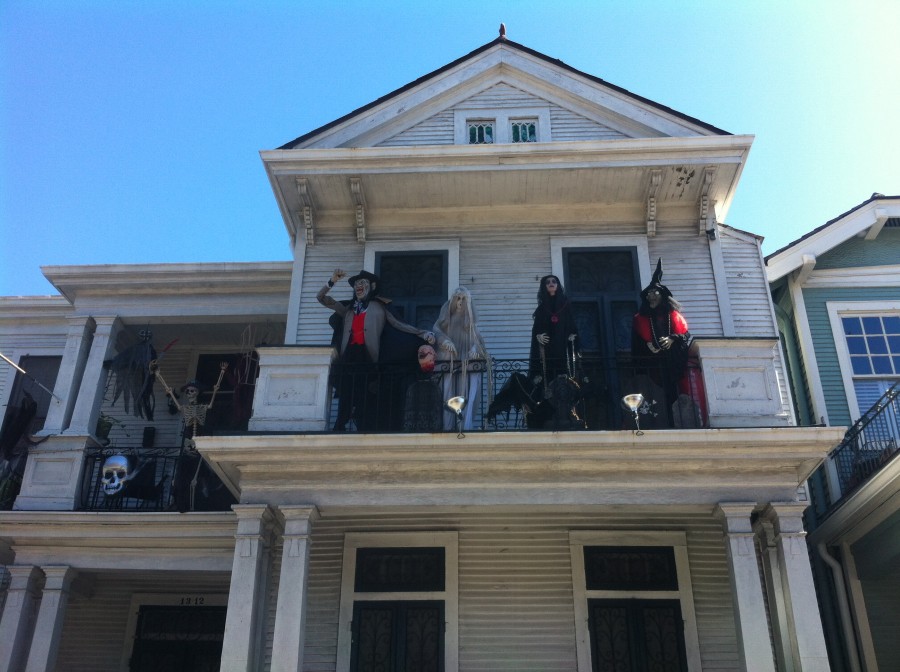
If traveling is about the journey, then there are lessons to be learned. Weekend-ing in New Orleans was one of those practical adventures that had less to do with voodoo and more to do with the real situations of getting, living, and leaving there.
Lesson one: sometimes you have to DIY. Upon arrival at YYZ, Toronto’s International Airport, the early flight was pushed until later. You know what they say, tired heads lead to disappearing boarding tickets. After a mad scramble for a lost boarding pass, we had to pass on the plane. We decided to talk to the United Airlines representative who said she didn’t really know what to do, and that we should call our travel agency. Our travel agency was an affiliate of SkyScanner, the bargain flight search engine. Our “travel agent” re-booked our flight for 5 p.m., and was willing to charge us a mere $1,400. I refused the courteous offer and began thinking of other places that we could go for a weekend: Montreal, New York, Chicago . . . In the end, a woman from another airline said we should call United directly. “Just do it yourself, this woman doesn’t know what she’s talking about.” So, we did and our tickets were re-booked free of charge. We went to the airport bar to celebrate.
Lesson two: if you are flying United Airlines, beware of your stopover times. The airline may not take layovers into account, which means you should. So, there is less than an hour between flights, find another flight with an hour or more in between. That means that even if you are on one of the brand new airplanes — so new that they are too tall to connect with the gate and are delayed thirty minutes — you will still have enough time to make your next flight instead of rooming in an Econolodge in Humble, Texas.
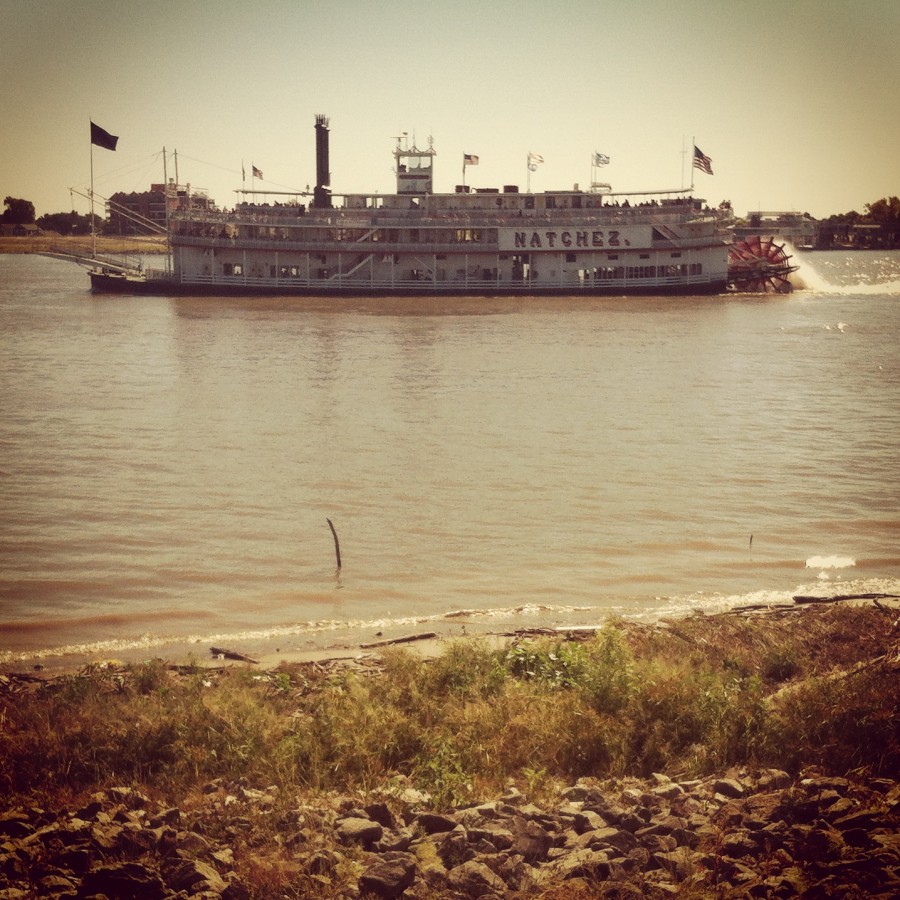
Lesson three: when booking with AirBnB, research the heck out of your neighborhood, including the difference that a block or two would make. When booking the room in NOLA, I understood that the house was close to the French Quarter, but I didn’t understand it was on the other side of the highway in the 7th Ward. The other side was a little rougher and a bit more real than I had expected, which is amazing if that’s what you are expecting. After talking with friends and locals, each suggested that we take cabs back to our rental because, “This is the South, little honey, and the kids got guns. If they want what you have, they will shoot you.”
The advice was greatly appreciated, and after we cabbed back to the house on our last night, we found out the neighbors had been broken into. The kids from Chicago that were staying there had all their valuables stolen and the rest of their stuff just discarded in the backyard.
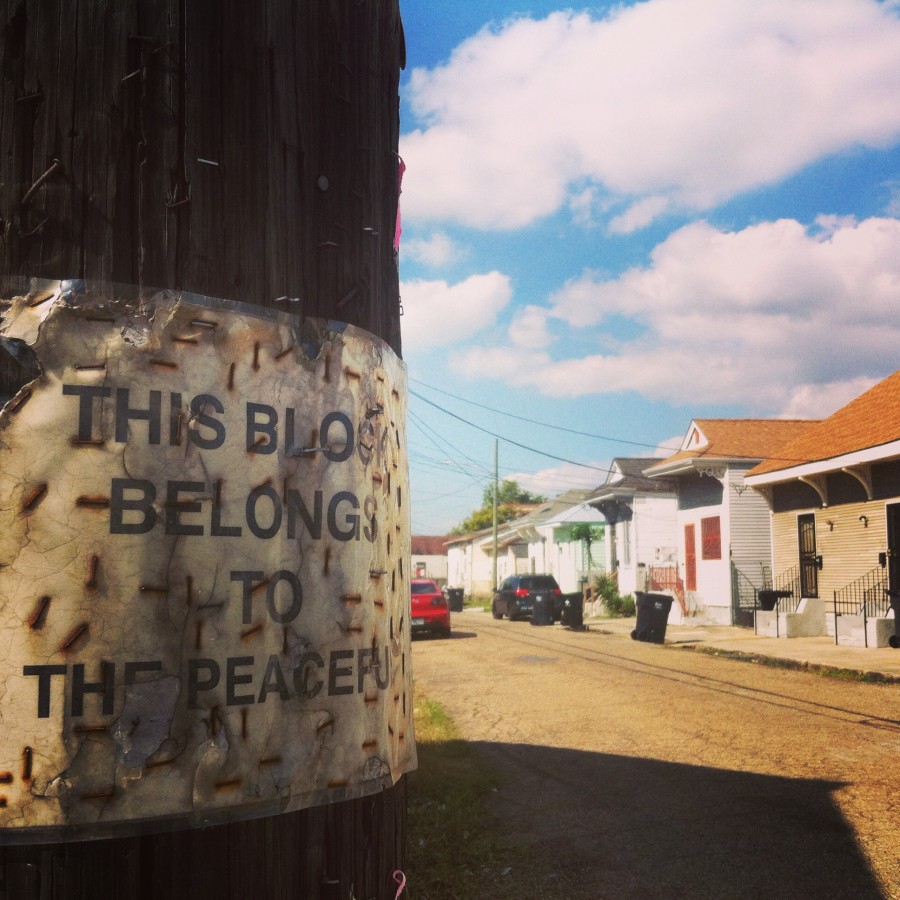
Lesson four: go in expecting the unexpected. It may not be Bourbon Street the whole time, or even at all. Instead, Royal Street had all the glamor and less of the gigantor daiquiris. Chartres, Decatur, and that lovely Canal Street were more than enough excitement and voodoo to last a decade.
Lesson five: laugh. You have to. It is quite humbling to allow life to take you through unexpected movements. Pat yourself on the back that you survived another adventure in all its real glory. Enjoy that you had real conversations with real people who had left post-Katrina and are slowly migrating back to re-establish their lives. Relish that French colonial architecture and the legendary southern hospitality. Don’t forget to dabble in the hot sauce, sip a coffee while dunking your doughnut in Cafe du Monde, and if you don’t go swamp crawling, at least eat a little alligator.

 Toronto born and based, Brit Weaver is an avid leisurely cyclist, coffee drinker and under-a-tree park-ist. She often finds herself meandering foreign cities looking for street eats to nibble, trees to climb, a patch of grass to sit on, or a small bookstore to sift through. You can find her musing life on her personal blog, TheBubblesAreDead.wordpress.com.
Toronto born and based, Brit Weaver is an avid leisurely cyclist, coffee drinker and under-a-tree park-ist. She often finds herself meandering foreign cities looking for street eats to nibble, trees to climb, a patch of grass to sit on, or a small bookstore to sift through. You can find her musing life on her personal blog, TheBubblesAreDead.wordpress.com.
The post Five Lessons Learned While Weekend-ing In New Orleans appeared first on The Expeditioner Travel Site.
]]>The post The Emerald Isle Was Not Easy appeared first on The Expeditioner Travel Site.
]]>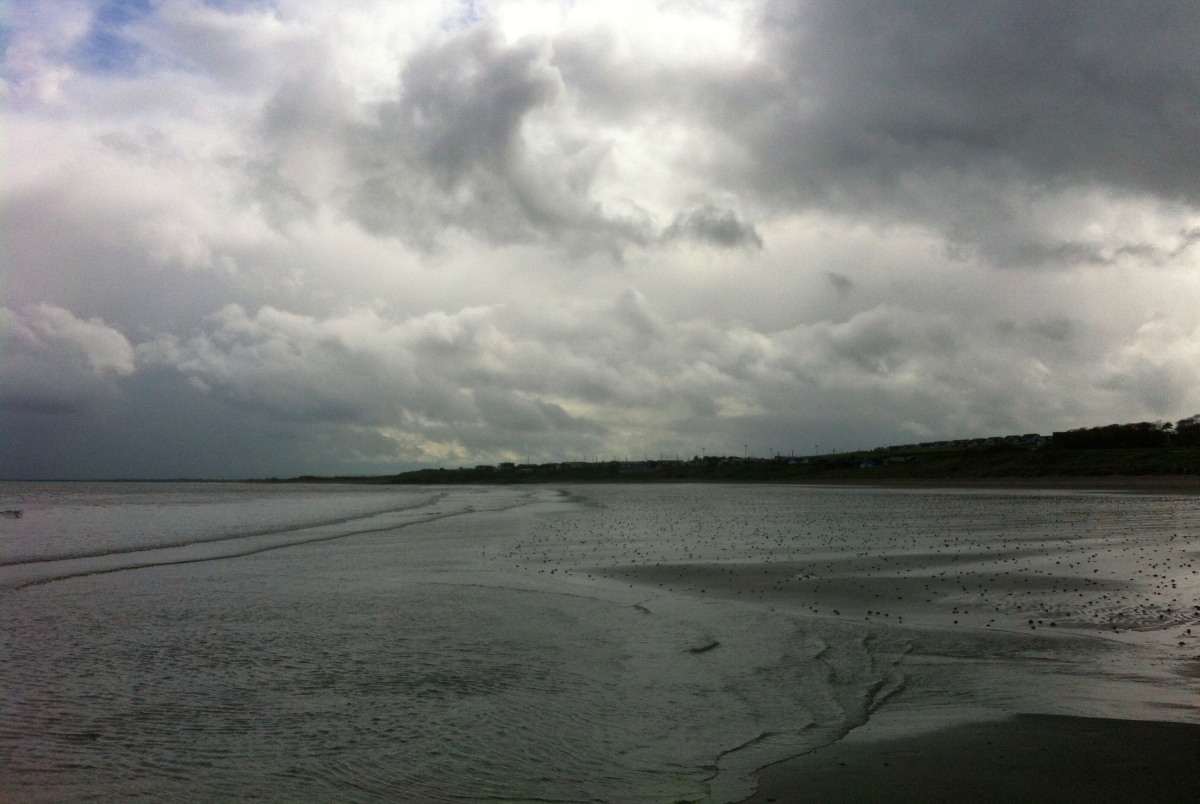
I wish I could say that I saw all the coasts of Ireland, but I only saw two. In between I saw rainbows and fields of rapeseed, and it was beautiful. The week-long trip went smoothly, but for some reason the journey was not easy.
First thing upon arrival: learn to drive on the opposite side of the road. Shift changer in the left hand, roundabouts, tight roads, a knack for napping behind the wheel: all primary challenges that needed to be overcome. I had to drive the 40 minutes to the county of Kildare, home to the small town of Kilcock. No Dublin, no hotel. I was living with an Irish family for a week and feeling pretty nervous. I wondered if I would understand the accents or the sense of humor. I wondered if I would find the country too worn from years of religious conflict.
Inside the family house were many rooms. A family of two parents and six children grew up there. The parents have since separated, a right given to couples as of 1996. Times must have been tight in the days before. I ask the youngest of the six whether he remembers what it was like. His dad worked three jobs to support his growing family and so there were challenges. This is a sensitive issue and I redirect our attention to Steven, the dog. Steven will forever be the Collie that peers in the window with wonder.
Over the span of a few days I meet the whole family. Mom, dad, oldest brother, oldest sister, second-oldest brother, middle brother, and sister of the youngest boy. Oldest brother is single and lives in Dublin. Oldest sister has three children. Second-oldest brother has three children. Middle brother has one girl with another on the way. And so it goes and may forever continue.
The youngest boy is the first of his family to move far away from home to another country. He moved to Canada with hopes of more job opportunities. As he said to me on the phone, “If I stayed here, I’d be cutting sticks for money. That’s what I could be doing.”
Through the lilting humor and those dang Irish-eyes-that-are-always-smiling is the reality that pangs the modern, young Irishman/woman: jobs, housing, politics and relationships. This is Ireland — real talks.
Although Ireland is on the slow upswing of an economic tumble in 2008, time seems to stand still. This young man’s family did alright for themselves when the economy was good (during the Celtic Tiger years of 1995-2008), but have been on cruise control ever since. They all are slowly paying off their mortgages and bank loans that were once distributed like free samples of shampoo (at half-a-million euro per packet and then recalled).
Even more recently the government has issued a notice of a water tax. This tax aims to be relative per usage so the more you use, the more you pay. Even though it seems to make sense in numbers, the reality is that those who will need more water (the large families) have less money (two working adults that support so many heads to clean). It is a tax to be added to the other expenses, and it joins the ranks with other obscure utilities like the T.V. tax (an additional cost per household television). It causes concern for working families who already have increasing costs with little rise in employment opportunities.
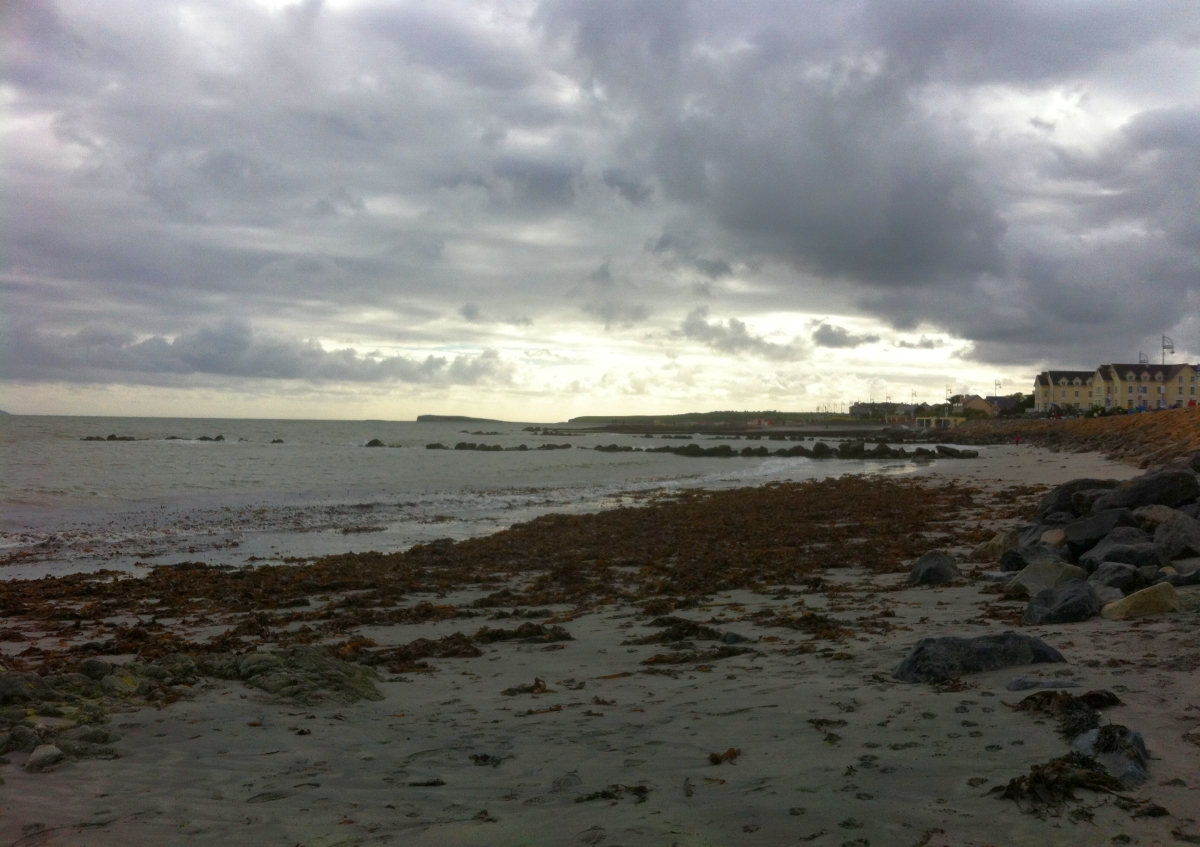
We take a trip to Galway, a small city on the west coast. There we ride the ferris wheel, we enjoy fish and chips and pints of Guinness. We venture to the aquarium and to the gift shop in search of Claddagh rings.
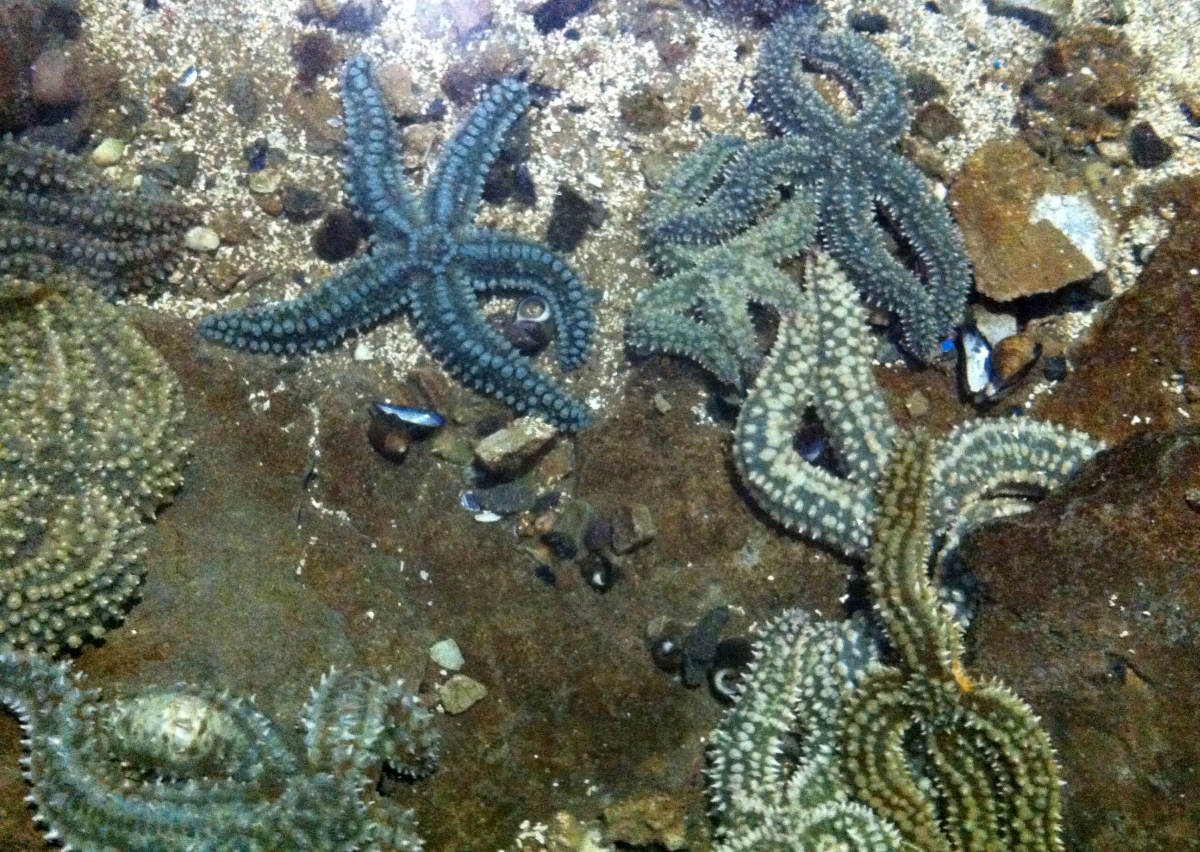
At the sho, the owner tells us of the rough winter and how the consistent rain caused mass flooding. Although her shop is a couple hundred feet from the shore, she told us that the water level was above the counter after the heavy rains. Hundreds of euros in damages from the worst flooding she had seen in years. She maintained her good humor, but her smile was humbled by the stress it must have caused.
We returned to Kilcock, Kildare, to finish the rest of our vacation. I couldn’t help but wonder how everything we had experienced was a typical week in the life of this average Irish family. Even as a visitor, the flight in was smooth, the check-ins were orderly, but by no way did I feel like hearing those stories was easy.

 Toronto born and based, Brit Weaver is an avid leisurely cyclist, coffee drinker and under-a-tree park-ist. She often finds herself meandering foreign cities looking for street eats to nibble, trees to climb, a patch of grass to sit on, or a small bookstore to sift through. You can find her musing life on her personal blog, TheBubblesAreDead.wordpress.com.
Toronto born and based, Brit Weaver is an avid leisurely cyclist, coffee drinker and under-a-tree park-ist. She often finds herself meandering foreign cities looking for street eats to nibble, trees to climb, a patch of grass to sit on, or a small bookstore to sift through. You can find her musing life on her personal blog, TheBubblesAreDead.wordpress.com.
The post The Emerald Isle Was Not Easy appeared first on The Expeditioner Travel Site.
]]>The post The Australian Coffee Invasion Has Begun In New York appeared first on The Expeditioner Travel Site.
]]>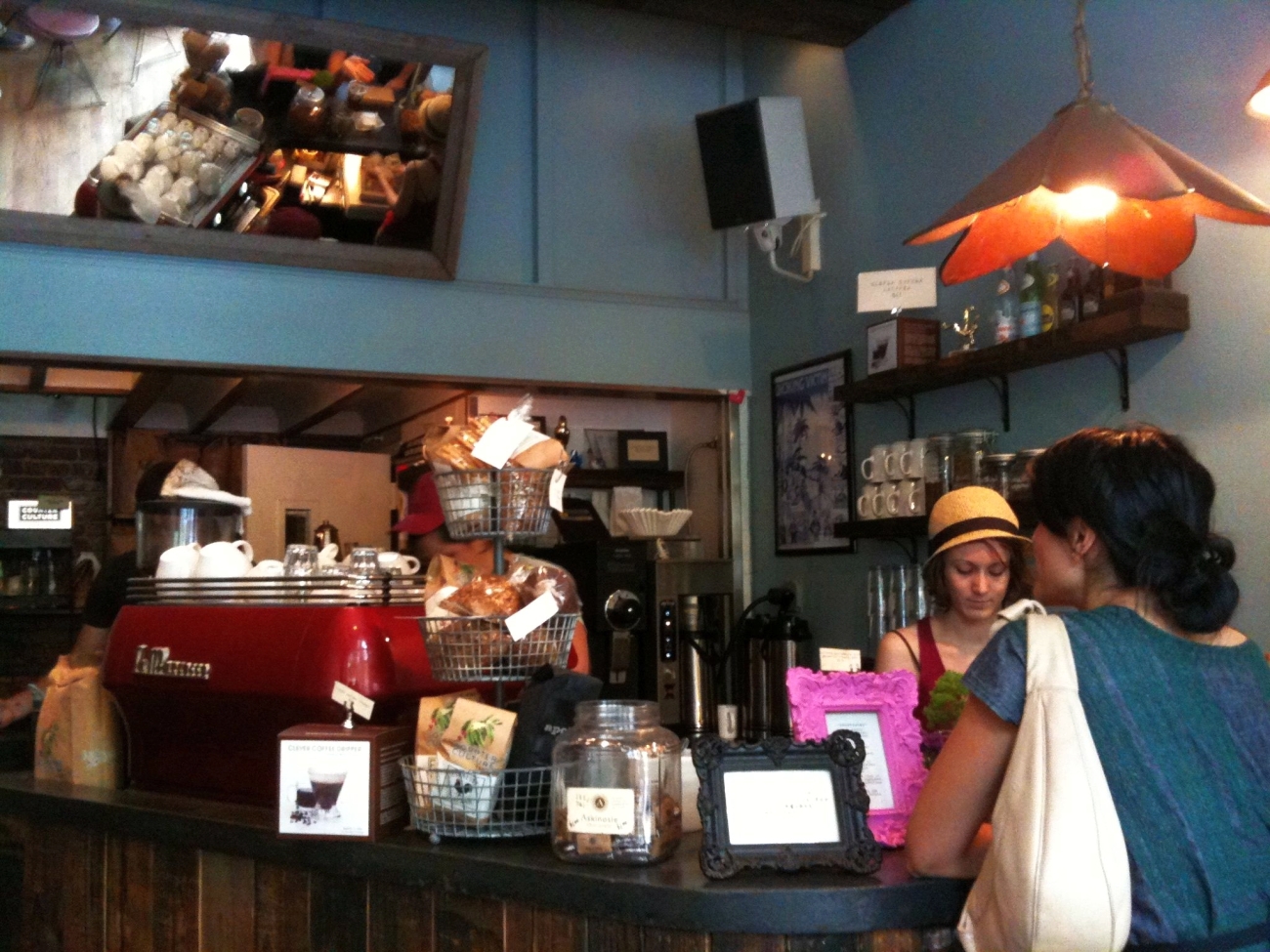
Apparently, if an Australian gives your city the thumbs up for being up on the coffee culture, you have succeeded. You see, you may not have known it, but the Australians are actually java connoisseurs, something I learned while reading this recent article in the Sydney Morning Herald, which shows caffeine fanatics where to look in New York for a decent sip of brew.
They not only highlight the cool cafes in Manhattan (such as Bluebird Coffee Shop in the East Village — run by Melbourne expat Alex Hall), but they also knowingly delve into coffee-centric Brooklyn where Toby’s Estate, the well-known Australian coffee company, opened its first American branch.
Still, when reading the article, I had one question burrowing in the back of my brain: Who would have thought that coffee would be loved so much down under (far from the coffee-growing regions of the world)?
Upon further investigation, I learned there is a general consensus that Australians have a strong (or bold?) coffee obsession. They savor Italian-inspired stove-top espressos as well as the divine shot pulled from a La Marzocco machine. So ardent are they in their love of a quality cup, some even claim to detox before venturing to North America to avoid having to succumb to getting their fix in a Starbucks. In fact, it wasn’t too long ago (2008 to be precise), that Starbucks was struggling so much in the Australian market that it had to close 61 of its 84 outlets as a result of the country’s sophisticated coffee palate.
Perhaps it comes down to geography. Perhaps as a result of being simultaneously surrounded by breathtaking scenery and dramatic landscapes, they have become accustomed to the bold and the beautiful. Whatever it is, I am happy that they push the bar and pull the shots.
By Brit Weaver
[Bluebird Coffee Shop by Jill M/Flickr]

About the Author
 Toronto born and based, Brit is an avid leisurely cyclist, coffee drinker and under-a-tree park-ist. She often finds herself meandering foreign cities looking for street eats to nibble, trees to climb, a patch of grass to sit on, or a small bookstore to sift through. You can find her musing life on her personal blog, TheBubblesAreDead.wordpress.com.
Toronto born and based, Brit is an avid leisurely cyclist, coffee drinker and under-a-tree park-ist. She often finds herself meandering foreign cities looking for street eats to nibble, trees to climb, a patch of grass to sit on, or a small bookstore to sift through. You can find her musing life on her personal blog, TheBubblesAreDead.wordpress.com.
The post The Australian Coffee Invasion Has Begun In New York appeared first on The Expeditioner Travel Site.
]]>The post Afghanistan: Should You Go And How To Get There? appeared first on The Expeditioner Travel Site.
]]>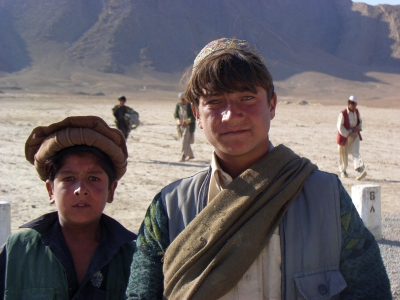
A recent article on GoMad Nomad tries to show travelers how to get to Afghanistan, which, in recent years, has been more difficult and slightly frightening. At the top of the article, there is a disclaimer noting that, although the author has survived a trip to this country, it does not mean that one should choose to take the journey. It is dangerous and there is a general warning for travelers from the United States and Britain. The article provokes more than just budgeting and a Lonely Planet history check. It may easily dissuade even the most curious of folks.
The author outlines the paperwork needed and what borders to consider in the process of crossing. It almost reads as a surreal story of espionage filled with seasoned traveler jargon such as “double-entry visa” and confusing time restrictions.
I remember my grade 12 geography class and the slideshow put on by the teacher. During his undergraduate studies, he had the opportunity to travel to Afghanistan to do glacial readings. Along this un-trodden path, he described the warmth of the people, the diversity of the land and the abundance of leafy, green bushes, the names of which he never disclosed. I remember that feeling of knowing that travel was something I wanted to be a part of.
Afghanistan was not necessarily at the top of my list, but its proximity to India was alluring. Perhaps these were the thoughts of many who took the Hippie Trail in the ’60s and ’70s. This route was the bohemian revamp of the pricier Grand Tour of Europe (the popularized educational right-of-passage taken by the affluent beginning in the late-1600s).
The route of the hippies was overland, usually beginning in London or Amsterdam and continuing through to India or Nepal. The point was to be away from home for as long as possible, to stretch one’s dollars by experiencing the bare necessities and the kindness of strangers. To this day, travelers have made it to India via plane, but a relative few have ventured there via land. It makes me wonder if travel to certain areas of the globe has changed for our generation or if it is a general shift, like the migration pattern of seasonal birds?
When looking at the waves of travel in the past, there are patterns. Post-popularized The Motorcycle Diaries meant that Latin America would see foreign leather jackets and scruffy beards more than usual. Now, some people have an affinity with the American South, wanting to see Louisiana, Texas and Georgia to better understand the politics and culture that has been at the forefront of international news.
Places will experience a dip in popularity due to expense or curiosity and there will be those that are continual classics (such as Paris, New York, London, etc . . .). In between, we communicate with one another on where to go and how to do it. It would be interesting if one could track the migration patterns of humans like we do with whales and birds. Perhaps we could predict what place will be the next big destination in order to plan to go there or, as with this article on Afghanistan, divert around it.
With the internet, it almost feels like anything is possible.
That being said, the author does not hold back the beauty one experiences in the country. Again, he writes about the hospitality, the sublime landscape and the general elation of experiencing something bigger than one’s self.
I once was a proponent of traveling, no matter what the means or how one’s style is. Even all-inclusive resorts seemed to me a good break for those that work incessantly. I am beginning to doubt this and reformulate my idea of ethical and moral travel.
To travel just to do the same thing you are doing at home doesn’t add to the expansion of one’s mind or manner. If one is not willing to push his or her comfort zone and go in with an open (but conscious) mind, have a staycation. Don’t risk your safety or life trying to be adventurous. Just know yourself and what you are comfortable doing. However, for me, when doing further reading on Afghanistan (Lonely Planet has released an extensive book), I feel humbled by it and inspired about the seeming perseverance of the people. And yes, kind of scratching at my itchy feet.

About the Author
 Toronto born and based, Brit is an avid leisurely cyclist, coffee drinker and under-a-tree park-ist. She often finds herself meandering foreign cities looking for street eats to nibble, trees to climb, a patch of grass to sit on, or a small bookstore to sift through. You can find her musing life on her personal blog TheBubblesAreDead.wordpress.com.
Toronto born and based, Brit is an avid leisurely cyclist, coffee drinker and under-a-tree park-ist. She often finds herself meandering foreign cities looking for street eats to nibble, trees to climb, a patch of grass to sit on, or a small bookstore to sift through. You can find her musing life on her personal blog TheBubblesAreDead.wordpress.com.
The post Afghanistan: Should You Go And How To Get There? appeared first on The Expeditioner Travel Site.
]]>The post Is There A Right Path To Travel? appeared first on The Expeditioner Travel Site.
]]>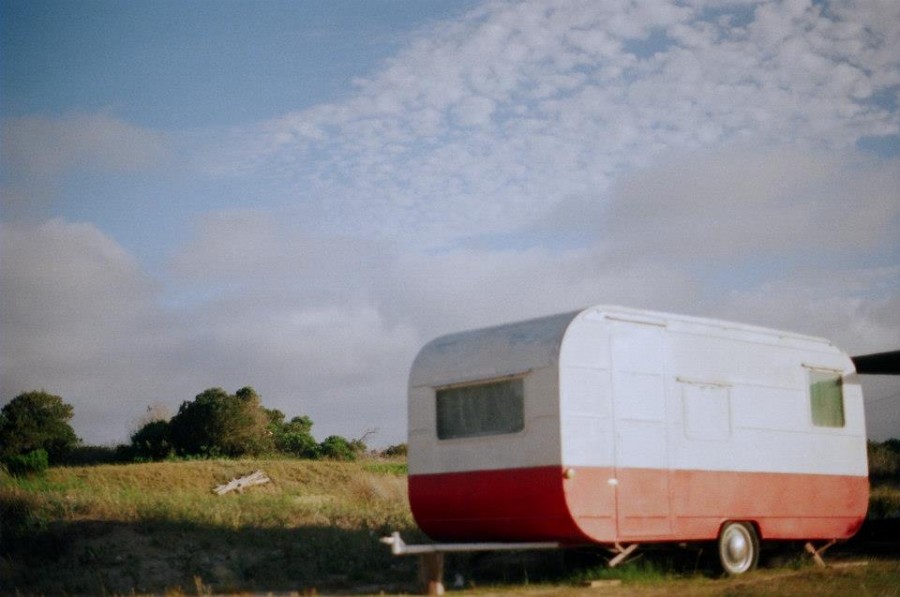
And, I quote, “Getting there is half the fun when you’re on a cruise ship that left Brisbane on Saturday afternoon and won’t dock at Noumea until Tuesday afternoon, and you’ve got four new books from the library.”
That was from a recent article in The New Zealand Herald by Ewan McDonald who head-butts the idea of traveling for the journey as opposed to the destination-centric approach. But, wait, wait, it’s a little more complex, the author ponders. The fun part of travel, he says, is the luxury that we get to enjoy: those four days of worn-in sun chairs on the deck of a cruise ship. Rejuvenation that comes from choosing a little R&R instead of the rum and coke with the locals while stranded in some abandoned nowheresville hut. To McDonald, “roughing it” is not the kind of travel people are actually looking for.
I agree that travel remains largely for the temporary adventurist, those that have a few weeks off here and there and need some fresh ideas from the hooligans abroad. However, I would hate to lump travel into just one category. Generally, if you lump it, leave the adventuring for those that still find wonder in the whole charade.
It’s true that some (okay, most) may not want to take the advice of Survivor Man for their next getaway. Of course. My idea of a vacation is not what things I can find on the ground to eat (although freeganism is having a surge of popularity). Most people’s idea of vacation is to get away and, perhaps, dabble in supervised adventuring (rafting, zip-lining, glacial trekking, etc . . .)
Then, there are those that just drop everything and go, hoping to learn a few things along the way. For these folk, the adventure is not in those thrills at the destination. Perhaps it is just a new language, a new skill, geographical orientation or cultural exposure that are on the traveler’s mind.
Nevertheless, along the way there are going to be bumps, hiccups and detours. These are only to be expected: the quality of an airline meal, a road or neighborhood to never walk down, how to get a cellphone, what restaurant provides unlisted food poisoning. These are also a part of the journey and part of the baggage you sign for when clicking to purchase a ticket to anywhere.
Perhaps, life lessons are a part of every excursion of the day whether traveling to the forlorn or the office. Letting go of control (that we are human and make mistakes) or knowing how to regain it when the company books you a ticket that never existed in the first place. Perhaps, a greater understanding or realization that we are, essentially, all equally bound to different places with our minds in different places. And, how we still learn to yield, even when we think we see a green light that says go.
I salute each traveler, and to each their own little journey! Synonymous paths may all look different, but sound the same to me.

About the Author
 Toronto born and based, Brit is an avid leisurely cyclist, coffee drinker and under-a-tree park-ist. She often finds herself meandering foreign cities looking for street eats to nibble, trees to climb, a patch of grass to sit on, or a small bookstore to sift through. You can find her musing life on her personal blog TheBubblesAreDead.wordpress.com.
Toronto born and based, Brit is an avid leisurely cyclist, coffee drinker and under-a-tree park-ist. She often finds herself meandering foreign cities looking for street eats to nibble, trees to climb, a patch of grass to sit on, or a small bookstore to sift through. You can find her musing life on her personal blog TheBubblesAreDead.wordpress.com.
The post Is There A Right Path To Travel? appeared first on The Expeditioner Travel Site.
]]>The post Hostel Situations: Are Backpacker Hangouts Finally Branching Out? appeared first on The Expeditioner Travel Site.
]]>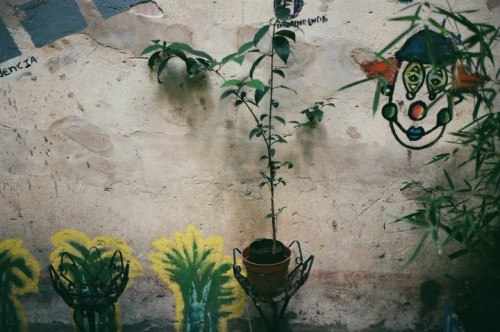
Increased connectivity is in the contemporary buzzfeed. Along with social media and networking platforms, travelers are discovering that the way we travel should, naturally, also be social and fun, which makes the rise in popularity of hostels make perfect sense.
A recent NYT article introduced the Mexico City-based hostel Downtown Beds, a hostel located in the former servants’ quarters of an old palace. It’s run and operated by a company that usually runs with boutique hotels in the D.F. and New York City. The fact that the company has decided to branch into the hostel realm is because it has realized there is a market in this travel sector.
As the director of hostels at Hostelling International USA states in the article, “We’re seeing more and more travelers who can afford to stay hotels, yet choose to stay at hostels for the social experience.”
Internationally, the youth travel industry is estimated at 160 million arrivals per year (accounting for 20% of all travel). That’s a lot of travel, and it has provided a large market for keen investors. Once in a location, travelers are now eager to observe the different environment. 70% of youth travelers state that they are motivated to explore, work or study, ultimately leaving with a higher awareness of responsible travel and social justice.
Hostels used to be looked at as the backpackers’ rugged adventure, likened to going to camp. It had the air that bordered on rustic rural and civil society, with their book-exchange shelves home to the likes of Candide translated into Danish or a Murakami translated into Spanish. Going around the circle with a bottle of beer at the center at the end of a long day, one learned where people are from and mountains they had climbed to get there. It’s the way the everyday person travels, and each person’s story allows the listener to learn something different and new — the reason why he or she traveled in the first place.
It was from this seed planted that the backpackers’ ideal of travel has grown into a $34 billion industry.
The NYT goes on to speculate how this new travel experience may supersede the prehistoric hotel because it adds that extra element of fun to, what can sometimes be, a very solitary situation. It provides solo travelers the chance to gain travel buddies and off-the-beaten-track suggestions that guidebooks from 2009 never can.
The industry is also making it user-friendly with design and technology that eases the adjustment time. It provides that level of boutique comfort, even in the strangest of places.
However, it makes me wonder: Is this amalgamation of boutique backpacking a positive, negative or just the new way? If it’s the new way, I’m okay with it. I just think I would still prefer a little discomfort when away from home.

About the Author
 Toronto born and based, Brit is an avid leisurely cyclist, coffee drinker and under-a-tree park-ist. She often finds herself meandering foreign cities looking for street eats to nibble, trees to climb, a patch of grass to sit on, or a small bookstore to sift through. You can find her musing life on her personal blog TheBubblesAreDead.wordpress.com.
Toronto born and based, Brit is an avid leisurely cyclist, coffee drinker and under-a-tree park-ist. She often finds herself meandering foreign cities looking for street eats to nibble, trees to climb, a patch of grass to sit on, or a small bookstore to sift through. You can find her musing life on her personal blog TheBubblesAreDead.wordpress.com.
The post Hostel Situations: Are Backpacker Hangouts Finally Branching Out? appeared first on The Expeditioner Travel Site.
]]>The post A Mostly Forgotten Treasure In The Himalayas Has Me Asking: What Makes Us Travel? appeared first on The Expeditioner Travel Site.
]]>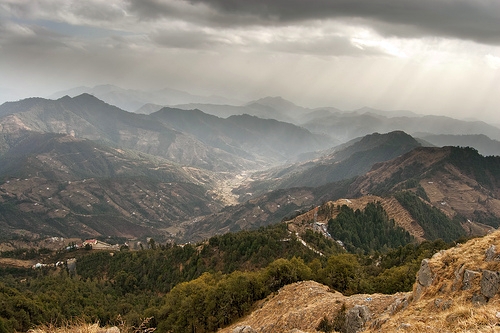
A mostly forgotten treasure in Guler, a small town in the Punjabi state of India nestled at the foothills of the Himalayas, is home to a 250-year-old crumbling palace that has been taken over by the jungle, leaving behind remnants of a not-too-long-ago past of royal artistry in the valley. The Financial Times recently went in search of this art, and others by its creator, and found a trove of discoveries just waiting to be explored by curious travelers.
What led them there was the travel writer’s initial fascination with the 18th-century painter Nainsukh, a famed fresco artisan who, along with his brother, Manaku, and his father, were one of the time’s leading painters of the area, Pandit Seu. At the time, the family was commissioned by the royals to recreate images from their favorite religious texts — tales of woe, battle, struggle, love, lust.
What is art and how do we define it? It ranges from hands on a wall to splatters of retro-graded Technicolors — but for what purpose, and what does it show?
As the author suggests, through Nainsukh’s style, a type of “human reality” is explored by going beyond the conventions and creating “miniatures full of living and breathing individuals [where] everyone, each page, each villager, each gardener, is shown in portrait form as a real person.”
Expression of what lies beneath surfaces in many ways. We dance, we sing, we draw, we write and we yearn to communicate to the world a universal truth: How we feel and what’s going on. Some are better communicators than others, and some of us are perhaps better able to speak a more universal (popular) language. The message remains consistent with tales of woe, battle, struggle, love and lust, and it transcends hundreds of years.
It spoke to a travel writer exploring India in the present who, so happened, was compelled to see something in real life from what he had seen only in paper and on screen. He read about it, it sparked his interest, it pulled him to a place and along the way and he shares his adventure.
If you ask me, the true treasure was not only what he found, but that someone had seen something and showed the courage to follow it. It’s one of many reasons why we travel.
By Brit Weaver
[Foothills of Himalayas by Mac Dor/Flickr]

About the Author

Toronto born and based, Brit is an avid leisurely cyclist, coffee drinker and under-a-tree park-ist. She often finds herself meandering foreign cities looking for street eats to nibble, trees to climb, a patch of grass to sit on, or a small bookstore to sift through. You can find her musing life on her personal blog TheBubblesAreDead.wordpress.com.
The post A Mostly Forgotten Treasure In The Himalayas Has Me Asking: What Makes Us Travel? appeared first on The Expeditioner Travel Site.
]]>The post Lost And Found In Buenos Aires appeared first on The Expeditioner Travel Site.
]]>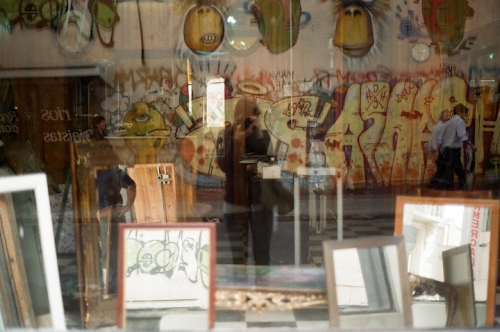
Sometimes we travel for our soul’s journey, to discover something about a place and something about ourselves. Time and again, people believe that those that travel are “running away from something,” and I keep saying, “perhaps we are running towards it.”
Round one, Buenos Aires: a surreal, old-world cultural experience. A time to learn tango and how to properly share mate. Stepping off the plane into a humid heat with cab drivers vying for fares somehow made me think of Cambodia. I remembered that tense feeling of culture shock and really experiencing what “the hustle” meant.
Arriving downtown and walking the streets, the men would wolf-whistle and cat-call. It was another shock and often times offensive. My immediate reaction was to take alternate walking routes around our San Telmo neighborhood, unsure of what small hollers could lead to. I was, after all, in the “Latin America” that is often portrayed in our media as rife with illicit sex, drugs and violence. I even found going to the corner cafe nearly impossible to stomach, unsure of whether I should hold keys between my fingers and get my big person voice on. This was my first time in another country to live and I was living in a state of anxiety. In the moment I thought, wow, I have to do this for six months. I ached for my comforts of home.
After the six months, I returned to real life in North America, but things had changed. Life had to be reset in order. Yet, I was still on the Latin American adrenaline high. The intensity motivated me to get myself a new apartment and a new part-time job. I owned barely any furniture, but had the chance to attend a few beautiful weddings. Looking back, I can remember certain moments, but I was in a dark haze of not feeling a thing. By the end of a summer blitz (early-morning coffees and afternoon beers in parks with bicycles), I remember looking around my room and falling into that vortex of, well, why not? Why not go back to Buenos Aires? I was still on a roll, but could feel the comedown of my ideal lifestyle fading.
*
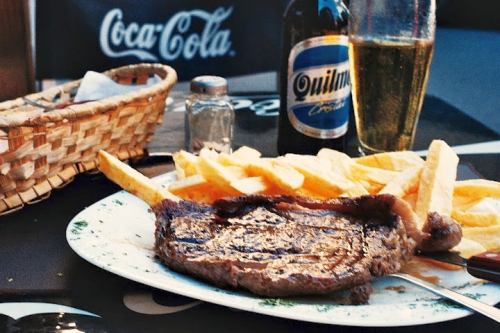 Round two, Buenos Aires was different. It began with a one-bedroom apartment in the neighborhood, Tribunales. It was close to everything: the beautiful architecture of the judicial district, the high-end shopping (albeit, window) of Avenida Santa Fe, in Recoleta, the inexpensive shopping in the Once neighborhood. I had my grocery store (a Coto), my fruits and veggies man down the street, the doorman (Rodrigo) who would say hello to me everyday (Como andas, Bretana?). I remember watching him interact with the people walking the streets with a warm smile. Everyone knew and loved Rodrigo.
Round two, Buenos Aires was different. It began with a one-bedroom apartment in the neighborhood, Tribunales. It was close to everything: the beautiful architecture of the judicial district, the high-end shopping (albeit, window) of Avenida Santa Fe, in Recoleta, the inexpensive shopping in the Once neighborhood. I had my grocery store (a Coto), my fruits and veggies man down the street, the doorman (Rodrigo) who would say hello to me everyday (Como andas, Bretana?). I remember watching him interact with the people walking the streets with a warm smile. Everyone knew and loved Rodrigo.
Inside the apartment there were some issues (a leaky faucet, a running toilet, a sky light that poured gallons of water into the kitchen on a typical stormy summer night). Trying to get anything fixed became a three-part challenge (address Rodrigo about the problem, he would tell me solutions, and I would have to hassle the plumber or Internet service people day after day). There was a language barrier as some of the people would not translate Spanish, preferring to talk in their dialect, castellano. So, by night, I would venture into the city bars to brush up.
Nights out alone, just wanting to talk and the people wanted to talk.
“Where you from? How old are you?”
“Does it matter? I just want to talk.”
I felt the tension creeping back in. I just wanted to talk about how to fix leaky faucets.
As two months leapt by, my castellano was improving. I felt more confident to find a job. I applied to hostels and bars. However, the reality that I could only work for another two and a half months was not what a business was looking for. I was getting desperate, and all I could do was lay down about it: Life as a pendulum, as a wave, as a spiralling circle. Revolutionary. It was a slap of reality in my foreign fantasy.
I needed to clear my head and I needed to do it on a budget. So, I walked and decided to take my camera with me to capture the beauty that is the essence of why people go to Buenos Aires. Even with all the beautiful architecture, the unique people to capture, I could not release the fear that I had no idea how I was going to survive the next couple of months.
I have a friend who lives in Buenos Aires, and her niece (who became a very good friend of mine) was visiting. At night, we would take visitors to bars in the San Telmo area. Some nights, I would stay at my friend’s place and wake up to beautiful music with a killer hangover. One morning, while having cookies and coffee for breakfast, my cellphone rang and it was for a job interview at a hostel, Kilca.
I was able to work for two and a half months in exchange for a bed. Suddenly, I felt lighter. One less thing to worry about. As I walked back to the apartment to pack my things, I decided to sit on a bench in a park. It was all happening so fast and I was feeling a bit dizzy. It made me nervous to try a new job and to meet new people I knew I would have to leave in the not-so-far future. I did not know how I was going to cope with the process. For the first time since re-arriving, I felt the intense fear creeping back in. I wondered whether I should just pack up my things and go home, instead.
Back at the apartment, I Skyped my family to express my concern. They told me it would be ludicrous to travel as it was cold and snowing back home. Just enjoy yourself, they told me.
What if, what if, what if . . . what if I couldn`t do it?
The body does not know good stress from bad.
I packed up my transient life into my one suitcase that I brought with me: a few pieces of clothing, a couple of books, some toiletries that I had picked up from my local Coto. I asked Rodrigo to hail me a cab which took me down the street to the hostel, my new home. Despite my calm exterior, my nerves were still a little shaken: I was broke and in an existential crisis, bare necessities in tow.
*
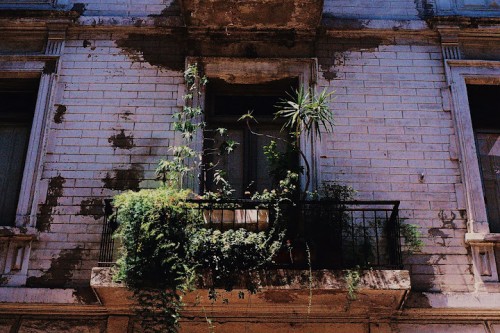 The “what if” of worse possible things that could happen never happened and swiftly, a calm had settled over me. Through the incongruousness of routine (waking and sleeping at varying hours), the experience of getting to know the locals, sipping coffee while others sipped mate, learning new mulit-meal cooking techniques in order to ensure dinner over the span of a week, I discovered a patience for time.
The “what if” of worse possible things that could happen never happened and swiftly, a calm had settled over me. Through the incongruousness of routine (waking and sleeping at varying hours), the experience of getting to know the locals, sipping coffee while others sipped mate, learning new mulit-meal cooking techniques in order to ensure dinner over the span of a week, I discovered a patience for time.
My last two and a half months living at Kilca, the backpackers hostel, were undefinable. I had the opportunity to meet some of the most interesting and adventurous travelers, and to forget about my worries and my strife. I often reminisce of the times I spent late hours of the night into the early hours of the morning listening to people’s thoughts and stories about travel.
Because of the large interior patio, we received many motorcyclists touring the world. We also accommodated people who had decided to start mountain climbing, families that were taking a six-month excursion to show their children different cultures of the world, and dancers who wanted to find the spark of tango. All sojourners who were not lost, but looking for their treasure buried within.
Our home became the harbor to sailors venturing the vast sea. I feel fortunate that for a couple of months, we lived on the ship that never sailed.
This was the life I had chosen, to wander and wonder and learn that, at times, I may be lost, but even in the darkest hours of night, you can find a lightness.
By Brit Weaver

About the Author

Toronto born and based, Brit is an avid leisurely cyclist, coffee drinker and under-a-tree park-ist. She often finds herself meandering foreign cities looking for street eats to nibble, trees to climb, a patch of grass to sit on, or a small bookstore to sift through. You can find her musing life on her personal blog TheBubblesAreDead.wordpress.com.
The post Lost And Found In Buenos Aires appeared first on The Expeditioner Travel Site.
]]>The post My 10 Ways To Revamp Argentina’s Top 10 Foods appeared first on The Expeditioner Travel Site.
]]>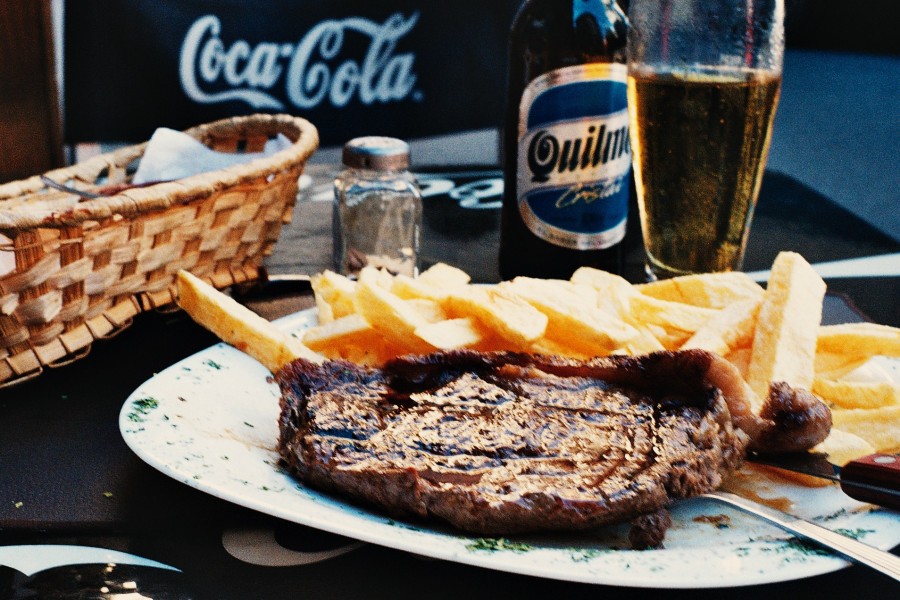
Every food needs a little evolutionary jump-start once in a while. As a fan of mash-ups (some of my favorite foods include shepherd’s pie and bubble & squeak — a post-Thanksgiving swirling concoction of leftovers), I think that combining one’s culinary cultural upbringing with that of another can only bring about good things.
Which made me wonder when reading this article on GoMadNomad.com about the top ten foods in Buenos Aires: What if I put a little spin on the list and came up with my own mash-ups?
So, here it is, my Argentinean mash-up on their top ten dishes.
1) Asado: Typical Argentine steak. Salted. That’s it and it’s delicious. But, how about adding on some homemade BBQ sauce?
2) Chorizo: Typical in a Choripan, throw in some potato chips, find some jalapenos, or melt down some of their infamously Queso de Campo for some homemade cheese sauce.
3) Empanada: We love them, but have them often enough and you start to crave some variety, like mushrooms and jalapenos.
4) Matambre: Nothing much you can do with a matambre unless you would like to make one yourself.
5) Milanesa: Sub in fish, anyone?
6) Pizza: Very doughy and not a whole lot of options for topping. One day, we made our own pizzas while living in B.A., throwing on basil, fresh tomatoes, chilis on mine, and various varieties of of cheeses.
7) Dulce de Leche: Typical for pastries and tostadas, but it’s especially delicious in rice pudding with cinnamon — so rich and tasty. Or, try it as a topping to a banana split.
8) Alfajor: These cookie-like snacks come in many varieties and in all kinds of brands. But when dipped in coffee, they’re a wonderful post-asado dessert or breakfast of champions.
9) Medialuna: A friend of mine in Buenos Aires had luckily brought a reserve of nutella (and hazelnuts are becoming more and more popular there). She served us the medialuna with dollops of hazelnutty goodness. You can buy cooking peanut butter, and if you sprinkle some salt on it, tastes just like the real thing.
10) Submarino: The classic Argentine hot chocolate (hot milk with chocolate served on the side that you add in) is perfect for cold days. What was I thinking by never trying one? But I fully intend to make one at home with cold milk and dulce de leche ice cream: an Argentine milkshake. Wouldn’t that be divine? And, at the end of the experimental journey, a steak with fries and a litre of Quilmes would be like a cherry on top.
Buen provecha!
By Brit Weaver

About the Author

Toronto born and based, Brit is an avid leisurely cyclist, coffee drinker and under-a-tree park-ist. She often finds herself meandering foreign cities looking for street eats to nibble, trees to climb, a patch of grass to sit on, or a small bookstore to sift through. You can find her musing life on her personal blog TheBubblesAreDead.wordpress.com.
The post My 10 Ways To Revamp Argentina’s Top 10 Foods appeared first on The Expeditioner Travel Site.
]]>The post Mexican Road Trip: Should You Do it? appeared first on The Expeditioner Travel Site.
]]>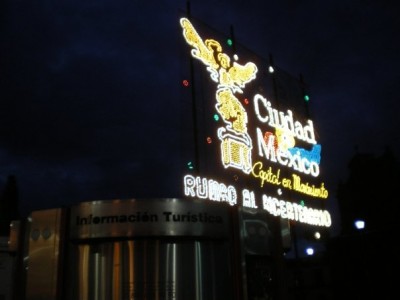
Braving an awesome experience comes with the weight of cost and benefit. To experience a culture — the people, the language, the street food — as authentically as possible is always the goal. Some no longer wish for simply Tex-Mex. Some want the real thing. At the end of the day, whether you actually take that epic road trip through Mexico with likely depend on how you plan to deal with the reality that violence has erupted in that beautiful country.
That’s why this article at Bootsnall is a nice rough guideline to trekking South of the Border. It provides a list of precautionary guidelines:
Drive the main roads: As the article explains, the main roads are usually both better maintained and provide a little more security. Apparently, the lower down the road food chain, the more interesting the towns, but the less security.
Travel during daylight hours: Something that should be considered in general, but more specifically for the lower food chain roads.
Expect delays: I think this rule applies to “Anywhere, World.”
Stay in organized places: Organized places can also mean your own family. Also, when staying in cities and towns, it is important to know what neighborhood your hotel or hostel is in. If it is in a rougher area, just make sure that you take enough sense to catch a cab when needed instead of taking the night to walk the streets.
Pack a sense of humor: Also always applicable for “Anywhere, World.”
Once you have packed these things (including a spare toothbrush and a positive attitude), it’s important to know which direction (roughly) you wish to go. For those that like to flow with a journey, I think the most important thing to pack is one’s sensibilities.
One of my friends just recently ventured into Mexico City on her own during a seven-hour stopover. She was ordering something delicious from a fonda — kind of like a family-run cantina — when the woman invited her back to the house to eat. My friend’s common sense kicked in.
She knew that talking with the woman was no danger, but by gently saying, “No, thank you. I am sure you are very kind, but I don’t know you, I am alone and would feel uncomfortable putting myself in that situation,” was a polite way of keeping the situation in control.
The woman was not offended, instead she replied, “You are a smart girl.”
You can explore the world with a sense of wonder, new to foreign customs and languages, but not be ignorant of one’s safety. One needs to find a fulcrum of balance, between danger (over-exploration of one’s adrenaline rush) and adventure (exploration of something new). If you are really nervous, take a friend or, as the article suggests, just let others know where you are going and when.
I would like to add some suggestions, like geting in touch with your intuition (trust your gut), doing your research, being informed of current events and knowing some practical words and phrases other than “Donde esta el bano?” (like embajada — embassy).
With these and the other simple measures in the article, you can navigate your way through the streets to eat tacos al pastor — with pork and pineapple — or elotes — corn smothered in mayo, chili powder, cheese and lime. Or take in the sights like Teotihuacan and meander through the Oaxaca region. A trip to Mexico can be an amazing experience, it just helps to do some things on your end to ensure that it will be.
By Brit Weaver

About the Author

Toronto born and based, Brit is an avid leisurely cyclist, coffee drinker and under-a-tree park-ist. She often finds herself meandering foreign cities looking for street eats to nibble, trees to climb, a patch of grass to sit on, or a small bookstore to sift through. You can find her musing life on her personal blog TheBubblesAreDead.wordpress.com.
The post Mexican Road Trip: Should You Do it? appeared first on The Expeditioner Travel Site.
]]>The post Lost In Uruguay appeared first on The Expeditioner Travel Site.
]]>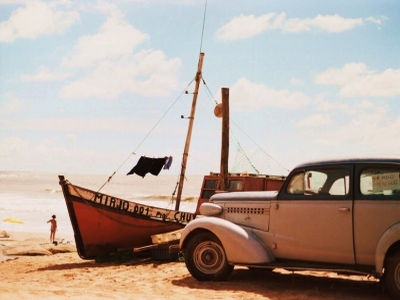
A good friend once told me: “Sometimes it’s nice to get a little dirty.”
On this rock we call Earth, there are two places that I love: the country and the city. I grew up in the countryside of Canada, and even though it was wonderful, I wanted to move to the city where I could enjoy doing and seeing more. While in the city, I created my daily routine that exists today. I wake up, I shower then I have a coffee while writing some things. I get groceries for the day then walk around and hit up the various bookstores. I have a nap and listen to some music. More than once in a while, I go out with some friends. Sometimes, I feel myself getting really wrapped up in all these “things to do” and begin feeling a little tired.
In the country (whether for camping or travel), I go au naturel. I don’t shower for a couple of days at a time, and I don’t plan meals but rather snack as the day rolls along. I read a lot and write a little. I drink a lot of coffee and listen to the radio. Usually, I am already surrounded by friends or family and have no need to “go out.” Instead, we just sit on some chairs and stare at the stars. These are the kinds of things we did as kids. We wouldn’t care about “getting a little dirty.”
I remember getting dirty as a kid and never caring. I spent some of my childhood on a farm in the outskirts of Ottawa. In the summer and out of school, some of us would go days without showering, rolling around in fields, feet calloused and blackened from running through the back roads. I remember my parents always reminding me to wash my hands before dinner and to get the dirt out from underneath my nails.
* * *
A few weeks ago, I left my Buenos Aires apartment and went to Uruguay’s capital city of Montevideo to visit some friends. As we sat eating tacos with our hands, salsa juice dripping to our elbows, they recommended that I go out and see the countryside.
“Brit, you could see the whole thing in four days. It’s pretty tiny. Honestly, you will love it.”
I didn’t have many things with me as I planned to spend just the week visiting with my friends. My clothes were already dirty, but I assured myself there was laundry at a future hostel. I didn’t bring my computer and my cellphone had already died. I had two books with me, a notebook and a pencil case filled with various writing instruments. Four days. I could do four days, I told myself.
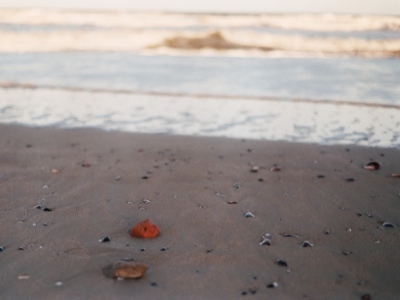 I started from the main bus terminal in Montevideo — Tres Cruces — and planned to head north along the coast. It had been some time since I’d eaten seafood and I was in need of tranquility. I decided that the small fishing town in the Rocha province would give me my fill, so I chose to start in Punta del Diablo and make a tour from there.
I started from the main bus terminal in Montevideo — Tres Cruces — and planned to head north along the coast. It had been some time since I’d eaten seafood and I was in need of tranquility. I decided that the small fishing town in the Rocha province would give me my fill, so I chose to start in Punta del Diablo and make a tour from there.
After a few hours on a bus, we pulled off the dusty road and into town. I had no hostel booking, just a name to go by. “Excuse me, do you know where the El Diablo Tranquilo Hostel is?” I asked a convenience store worker.
“No, sorry,” he replied with a stretched smile.
“I do. I am staying there and I will take you to it,” said a girl with a brown ponytail counting her change.
“Ready?” she asked as soon as she finished.
* * *
I planned to spend a night, perhaps two, maybe three, and each day the beach seemed to pull me in. I got skillet burnt laying on the sand. The salt sucked any toxins from the build-up of city pollution. At night I spent time with new friends eating fish empanadas and spicy squid ceviche, while washing it down with beer and wine. We had no watches or cellphones to keep track of time, and I had no idea what happened as I looked at the date and two weeks had passed. It was as though time was sucked away by salty sea and sun, lost in ease.
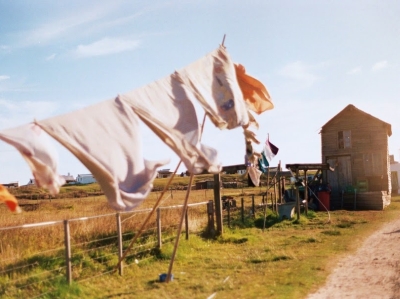 I didn’t take a tour of the country. Instead, I decided it was time to head back towards Buenos Aires, stopping for a night in Cabo Polonio, a small colony with one electrical wire into the town. I was told that at night, without lights, the stars appear like no other place on Earth.
I didn’t take a tour of the country. Instead, I decided it was time to head back towards Buenos Aires, stopping for a night in Cabo Polonio, a small colony with one electrical wire into the town. I was told that at night, without lights, the stars appear like no other place on Earth.
After dinner by candlelight, I walked along the beach, lit by a creamy, starry night. Watching them invoked a magical nostalgia, reminding me of nights spent under the stars on childhood balconies and camping with friends. When I was a kid, I learned how to tell the time of season and how to use the stars to direct your way home.
Waking up from a night in Cabo Polonio, I saw people eating breakfast together using the bare necessities. For a moment, I wondered if I needed to return to my apartment, to my things, to an adult life. I had to remind myself that life was not in that small bohemian, seaside colony. In a sweeping moment, I packed my things, boarded a truck, and headed to the bus stop that took me to Montevideo and, ultimately, to the ferry that travels to Buenos Aires.
The decision was sudden, and at dawn, as the ferry floated towards one of the largest cities in the world, I could see the few lights still lit from the buildings twinkling like stars. It felt comforting to be going to my home away from home. Back to a city where the salty sand smell became heightened.
Within my comforts of home I was able to have my laundry done and scrub away three days of sand and salt from my skin and feet. I went on the Internet and messaged my family and friends. I listened to my favorite podcast and even though I felt lighter, those moments of getting back to nature, reminiscent of childhood nostalgia — simply getting dirty — helped re-ignite a spark.
By Brit Weaver

About the Author

Toronto born and based, Brit is an avid leisurely cyclist, coffee drinker and under-a-tree park-ist. She often finds herself meandering foreign cities looking for street eats to nibble, trees to climb, a patch of grass to sit on, or a small bookstore to sift through. You can find her musing life on her personal blog TheBubblesAreDead.wordpress.com.
The post Lost In Uruguay appeared first on The Expeditioner Travel Site.
]]>The post Buenos Aires: Living In A City Of Passion (And The Comedown) appeared first on The Expeditioner Travel Site.
]]>
I remember when I first walked the streets of San Telmo — a neighborhood in Buenos Aires — and becoming hyper aware that I was no longer in North America. The people, the architecture, the steak, the all-night partying was all very grandiose. The young ladies talking loudly on their phones, the groups of guys making theatrical jokes on the buses, the people in line at the bar gesticulating wildly. For the first couple of months, I felt very small.
I read this recent article in The Telegraph about an author’s experience in the city rumored to be of passion, pessimism and drama. When it came down to life and relationships, one porteño described how in Buenos Aires, “We don’t have a middle road . . . We love or we hate.”
It’s black and white, yes or no, straightforward and to the point. It’s bold and it knows what it wants. It appears to have confidence. And I wonder why and think that perhaps it is something in the air. As the author describes, “[T]he real magic of the city lies in something essentially Latin. Trying to discover just what that something is can be the most fascinating part of a visit.”

Trying to live through it was almost a sensory overload. The energy of a city so intense leaves you permanently elevated. In the beginning, it was funny and flattering. Some days I would get dizzy with the frustration of trying to hold a conversation with some porteños for longer than an hour. Towards the end of my stay in the city, it just was what it was. Like the article implied, if sitting at a bar, the men do “throw themselves at you,” but if you are uninterested they leave just as quickly.
Eventually, living in this kind of atmosphere did prickle me a little. And like all good cities, when you live with it, you take the bad with the good (alas, no city is perfect). Sometimes, the imperfections (like lack of interest in clean streets and a functional recycling program), are the tiny details that can be worked on. What matters is if it has a good heart.
Now, since moving back to North America, rifling through pictures of my home to the south, it’s those small imperfections that I miss. And the comedown gets harder every time.
By Brit Weaver

About the Author

Toronto born and based, Brit is an avid leisure cyclist, coffee drinker and under-a-tree park-ist. She often finds herself meandering foreign cities looking for street eats to nibble, trees to climb, a patch of grass to sit on, or a small bookstore to sift through. You can find her musing life on her personal blog, TheBubblesAreDead.wordpress.com.
The post Buenos Aires: Living In A City Of Passion (And The Comedown) appeared first on The Expeditioner Travel Site.
]]>The post Some Thoughts On Flash Travel appeared first on The Expeditioner Travel Site.
]]>
As travelers, we are given the opportunity to see and experience the grandness that this world has to offer and a variety of options. Sometimes, we are so used to options that we leave things to last minute in order to get the best deal. However, as trips go, planning and not planning can have its road blocks, whether they are boulders or fences in the road. Still, we learn to divert our path and consider different directions. We become navigators.
As a kid, I was never afraid of thunderstorms. Even though lightening would strike close to home, the brilliance in the darkened sky was always a thing of beauty. The impulse of a quick bolt, counting the seconds until the thunder boomed, calculating how far the light had landed.
“Excuse me? I don’t understand. What do you meeeaaaan the ticket has been cancelled?” said frustrated traveler in need of return ticket home.
“Well, Miss, the travel times intersect and therefore, the air line has decided to cancel the ticket due to conflict. However, we do have another option . . .” said polite and patient customer service representative.
I could not be mad or frustrated with him. He was just doing his job and the customer is not always right. Still, I wondered why this process was necessary and tried to process why there was a $10 service fee for cancelling the flight. The reality was, I needed to get home.
A one-way ticket when you have intentions of returning home can be a challenge, although the free flow of having no set plans has its perks of adrenaline. The other week, I was on a budget search for a plane ticket from Buenos Aires, Argentina, to Toronto, Canada. I could philosophize about whether my return was meant to be, but I knew I had to make it home as I had made a promise to a friend to return for her wedding and funds were running out.
So, I started looking for flights and a couple of weeks ago, I found one. I booked it. I wiped my hands of any stress. Until, that is, the e-mail came a week ago saying that it had been cancelled. Trying to “get home” became an enduring task mixed in with a little stress.
One night while reading an article on USA Today about so-called “flash” sales got me thinking about one’s intention of travel and my recommendations based on personal experience. Flash sales are created and, as the article states: “Whatever the set-up, their goals are the same: to convince bargain-conscious travelers that if they want a deal, they’ll have to act quickly while the clock is still ticking.”
A little adrenaline rush in life is kind of nice because lessons are learned through different kinds of travel experiences. Right now, times are tight and some people are trying to find the best experience for the dime. As a reaction, we feel like we need to trust our impulses and have our fingers crossed that a better deal doesn’t come along afterward. When it comes to hotels, the article notes, “because most flash-sale deals require advance payment and can’t be changed or canceled, buyers risk losing out on a better (or less restrictive) rate from a different site or the hotel itself.” It becomes an equation of cost and benefit for budgeting and planning.
My recommendation is to assess whether one has a final destination. If you need to get home, I would recommend always getting a return ticket. If you plan on having no plan, jumping from country to country, I would recommend having at least a little bit “in case of emergency.” Whatever the case, knowing that you have a ticket home or the possibility of returning home allows for one to enjoy his or her time to it’s fullest, whether you get to eat steak everyday or stay in to save a few pennies. Either way, it usually works out in some sort of fantastical adventure. Sometimes, the adventure is the lessons we learn and what we discover about our own limits of comfort.
By Brit Weaver

About the Author

Toronto born and based, Brit is an avid leisure cyclist, coffee drinker and under-a-tree park-ist. She often finds herself meandering foreign cities looking for street eats to nibble, trees to climb, a patch of grass to sit on, or a small bookstore to sift through. You can find her musing life on her personal blog, TheBubblesAreDead.wordpress.com.
The post Some Thoughts On Flash Travel appeared first on The Expeditioner Travel Site.
]]>The post Writers Of Our Discontent appeared first on The Expeditioner Travel Site.
]]>
We usually experience epic moments in the down-and-out. It’s what makes for good stories because (hopefully) these moments are not part of the normal day-to-day. Rain, snow, heat and cold, when we gently suffer through discomfort a bed (even a hostel bed) never feels so cozy.
Often, travel woes are what ear-mark great writers. In a recent article in the Toronto Star, six authors were highlighted for their hard-times stories. They really just have had the worst luck with pleasant traveling (and perhaps that is the spirit of the travel writer: throwing yourself into the uncomfortable muck of things and then telling others about it).
It also reminds me of one of my favorite travel writers, Paul Theroux, whose self-induced discomfort (traveling all over the world by train, no matter what the condition) makes for those existential moments captured in a phrase. We can lament for him, take his eloquent words of wisdom and be grateful it wasn’t us.
The picture above was taken last year in the town called San Carlos de Bariloche, an Andean-town that looks like Switzerland (or how I would imagine the place to look like): mountains, chalets and Saint-Bernards. This mountain top was rated one of National Geographic’s most impressive views and to get there you can do it the easy way or the grueling way.
A group of us chose the grueling way, taking rented bicycles up and around the winding mountain road. Some in the group made the personal goal of not getting off the bicycle (and they succeeded). My personal goal was just to make it. My muscles had never quivered so violently as we rounded the last curve.
There were moments when I wanted to give up, hail a cab (of which there were none), throw the bike in the trunk, curl up in the back seat and have a nap. It wasn’t just the physical strain that was getting to me. Not knowing the “end” was a mental mind trick. I had to keep telling myself: just keep on keeping on. On the post-excursion bus-ride back to the in-town hostel, we all fell asleep.
Perhaps some of us live our lives symbolically. We need these experiences to prove to ourselves that through the low times (even self-induced bicycle torture), we climb back up, where the view is amazing. Pushing our mental and physical limits — hoping that there is a cup of hot chocolate and sleep at the end — gives you that existential (or endorphin) boost that some of us crave. And then some people write about it and it makes me wonder: when writing about travel, perhaps we seek the discomforts of abroad to us appreciate the comforts of home.
By Brit Weaver

About the Author

Toronto born and based, Brit is an avid leisure cyclist, coffee drinker and under-a-tree park-ist. She often finds herself meandering foreign cities looking for street eats to nibble, trees to climb, a patch of grass to sit on, or a small bookstore to sift through. You can find her musing life on her personal blog, TheBubblesAreDead.wordpress.com.
The post Writers Of Our Discontent appeared first on The Expeditioner Travel Site.
]]>The post Wandering Around Montserrat appeared first on The Expeditioner Travel Site.
]]>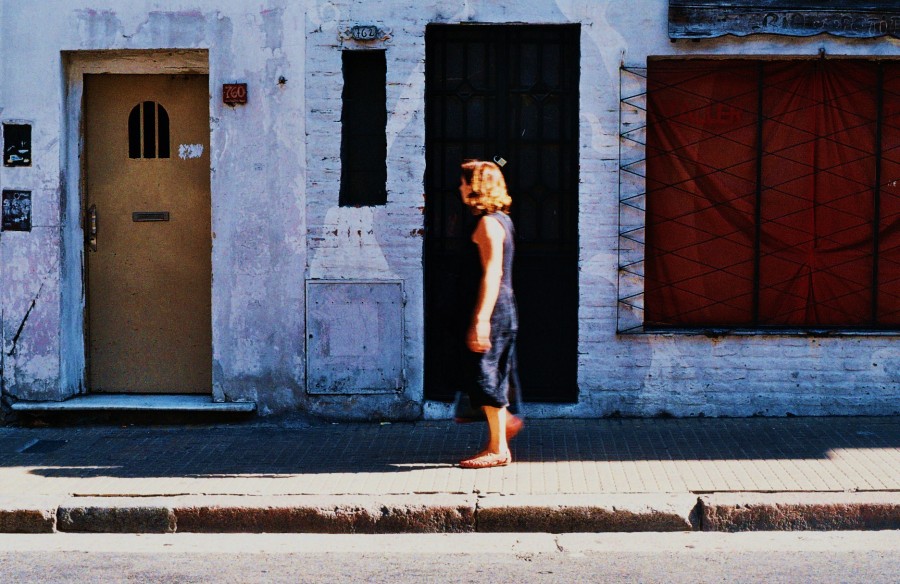
I have a knack for wandering around cities, losing my way for a few hours, but always finding my way to where I am headed. I think most travelers have this innate characteristic, but somehow I always forget to bring a map with me. It’s not intentional, I am just slightly spaced out. With so much to remember — keys, passport, cell phone, cash, books, papers, pens, etc. — it would be robotic to not forget something when running out the door.
So it was, a few months ago, I left my apartment in Buenos Aires and walked towards “the general direction” of San Telmo, the neighborhood (barrio) notorious for old buildings and bohemian artisans. I walked along the street, Montevideo, passed the Congreso barrio — where gorgeous ancient colonial architecture marks the political city of the past (as the Centro barrio is the polito-economic center of the present) — and entered a not-so-pristine part of town. The buildings are a little crumblier, a couple more dog bombs than usual and lots of crooked trees.
Many travelers also get a little homesick and remedy the queasiness using various methods. My prescription is to find neighborhoods within cities that remind me of home. My informative years were spent on a farm and romping around a small town. While living in Toronto, my home was in the neighborhood called Little Portugal. There, small family-run general stores and run-down bars filled with avid soccer watchers made me feel at ease. It was my Seltzer.
I remember visiting Mr. Matt Stabile in the summer and staying at the New York Loft Hostel, just on the cusp of Williamsburg and Bushwick. It had the same ambiance of “community,” which allowed me to not focus on the fact that the hostel’s shower did not have hot water. (Totally over it now. I was just being a princess.)
So it was, when I walked into this Buenos Aires’ neighborhood called Montserrat, it was like a breath of home air. Good air. Buen aire. (Minus the dog bomb smell.) It finally felt like I had found my home-away-from-home.
I believe that most people who live abroad start feeling homesick because of a sensory overload: new sights, new sounds, new smells, new languages. We can get dizzy with despair. We begin to crave the comforts of home — whether it is peanut butter, wool socks (in the middle of summer), our favorite programs that we live-stream from the internet, downloading music and/or face-creeping friends — just to get a fix.
Sometimes, we become a little lost in our discomforts and we forget to discover something even newer. The last time I was in Buenos Aires, I embraced the “old” Argentine ways (tango, traditional maté, horseback riding) and did not see how this city, just like most cities, is evolving. Nowadays, the kids are sipping maté (South American tea) with juice or milk and throwing in high kicks for Tango Nuevo. Last year, I was getting sick of accordians so I put on my headphones and listened my nostalgic North American big bands (ignoring the new Argentine rock — like Divididos or Cerati).
I forgot to keep trying new things.
Still, once in a while, when you feel like you are losing yourself in a culture or custom, you just need to find a little vintage store or coffee shop to remind you that you can find your comforts anywhere. You relax, choke up a little, and then head out again to try something new.
And sometimes, it just takes a little wondering, a little time and a little wandering to find some comfort in your home-away-from-home.
By Brit Weaver

About the Author

Toronto born and based, Brit is an avid leisure cyclist, coffee drinker and under-a-tree park-ist. She often finds herself meandering foreign cities looking for street eats to nibble, trees to climb, a patch of grass to sit on, or a small bookstore to sift through. You can find her musing life on her personal blog, TheBubblesAreDead.wordpress.com.
The post Wandering Around Montserrat appeared first on The Expeditioner Travel Site.
]]>The post How You Fall In Love With A City: Inside Egypt appeared first on The Expeditioner Travel Site.
]]>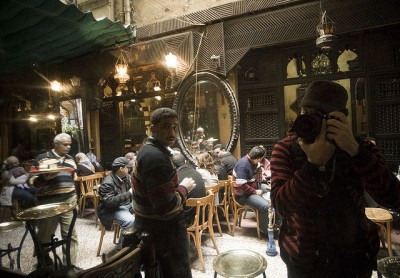
The essence of a city is what makes people fall in love with it. Sure, there are many things to do in an urban center much like there are many things to do everywhere, but it will steal our heart when we get to know the people in it, the blood that pumps through its heart and keeps the body moving.
This is not my first time writing this: cities have always captured my fascination because of their energy. One of my favorite moments when flying into an international airport — usually situated on the outskirts of the city core — is seeing the highways flowing with glossy cars carrying people to-and-fro the core. Sometimes, you can see the bottleneck effect of where traffic was clogged from construction or an accident. From up there, you can see how the buildings go from low-laying sprawl to high-rise reminders standing at the heart.
I always dreamed of going to Cairo. The allure was partly the history, partly the proximity to the desert and partly the culture. It was its warmth and glow that pulled my attention.
With the not-so recent events, a different Cairo is surfacing into view for all to see. As this recent article on CNN highlights, our view of contemporary Cairo has evolved. It is not just about the pyramids and the sand, but about the people and their lifestyle.
I asked a friend — Angela, who runs a B&B here in Buenos Aires — about Cairo. She lived in the city for a few years, got to know the people, learned the language and observed how they lived. By being there, she got to get a feel of the essence of the place:
I agree with every single bit of what the article said. I always loved how Egyptians hang out on the bridges over the Nile on warm summer nights. The breeze off of the water and because there are no buildings blocking it makes the bridges the coolest part of town.
There are all sorts of vendors selling everything you can imagine. Wedding parties head out to the corniche (the streets along the Nile) to have pictures taken, hang out among the beautiful buildings, get some relief from the heat and be social. On the boats, there are parties happening with loud music and dancing. It’s a blast. The Nile is the center of everything there.
When I asked her about the “slum” housing, she observed:
The low-income housing in Cairo is really interesting. They call the houses “generation houses” because each new generation builds an apartment of sorts on top of the already existing structure. So when a son marries, he and his wife move in above his parents and the houses just keep getting taller. You can tell how many generations live in the house by the number of floors. The problem is that there are no building codes and these houses sometimes collapse.
Still, despite its housing flaws, Angela still feels like it was the “safest place” she has ever lived. She continued to tell me that. “The pollution and noise in the city can become draining after a while. But that’s also the beauty in a strange way. It’s a magical place.”
Perhaps for traveling, when we do instant snapshots, we only get a glimpse of the surface. That’s O.K. too, because we need those moments. When watching a movie, nothing is more hilarious than getting the chance to say, “Oh wow, I was there!” But, when getting to know a peoples, sometimes you need to discover its problems, look at its faults and appreciate the people who have lived through it all. Perhaps this is how you fall in love with a city.
And sometimes, you just know.
By Brit Weaver

About the Author

Toronto born and based, Brit is an avid leisure cyclist, coffee drinker and under-a-tree park-ist. She often finds herself meandering foreign cities looking for street eats to nibble, trees to climb, a patch of grass to sit on, or a small bookstore to sift through. You can find her musing life on her personal blog, TheBubblesAreDead.wordpress.com.
The post How You Fall In Love With A City: Inside Egypt appeared first on The Expeditioner Travel Site.
]]>The post Following A Journey By Bike appeared first on The Expeditioner Travel Site.
]]>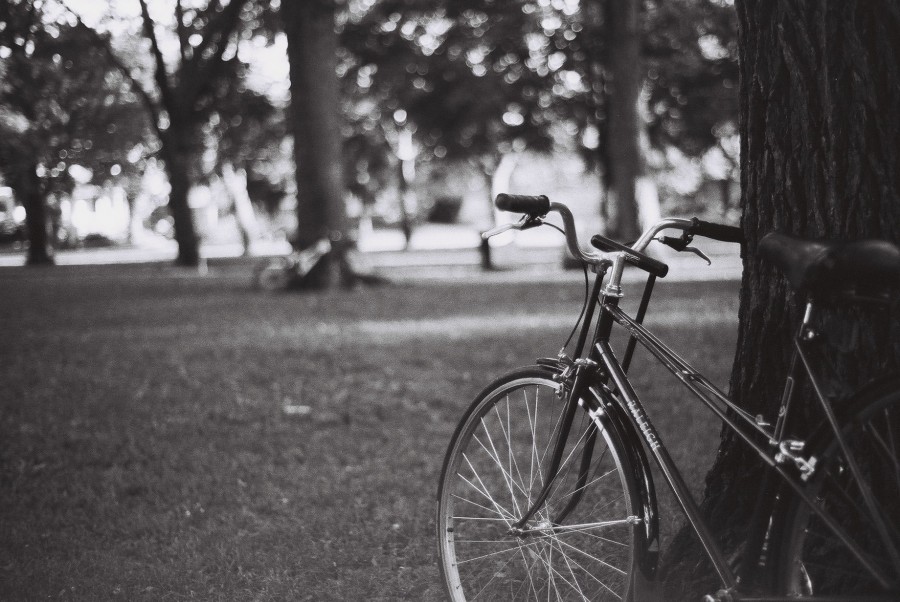
The other night I sat with a friend and asked her about her stories of traveling abroad. She has been everywhere from Italy to Egypt to Panama to Argentina, staying in each place for a couple of years, if not more. I thought, “Wow, what an incredible adventure.”
“Yeah, I never thought it was, but I guess you’re right. It was pretty awesome,” she replied.
Lately, I have been having this thought — but that could have been the existential quarter-life crisis — about humbly knowing one’s own accomplishments. I remember a friend saying she wished she was traveling around to different places and different spaces. I reminded her that it wasn’t a glamorous lifestyle, of which some people prefer, and that it was tough, both physically and emotionally. She said, “You’re right. Right now, I would not want to do that.”
I think, to each their own.
Some people often don’t see how beautifully abnormal each life is. While traveling, I have met some incredible people who have never left an hour or two from their home town or city for whatever reason. Yet, for some reason, they experience the same mental “growth” (if not more) as some avid travelers I have met.
When it comes to personal growth, I think that the only thing one needs to do is push his or her limits. You can do this at home or abroad, it just depends on what you find challenging.
So it goes that I found a blog called Journeys by Bike) about two self-claimed “normal” people — Matt and Sylwia — who decided to pack up and bicycle South America. I don’t know about others out there, but I find this rather remarkable. It reminds me of how inventive and creative humans can be with adventure. The most recent post was about their earthquake-experience in Chile from the comforts of their tent:
. . . despite being 45 km south of the city the quake awoke us, scared and unsure what had happened we quickly realised we’d experienced our first earthquake, we can now conclude our tent is quake proof.
What an experience!
This past summer, I experienced an earthquake from the comforts of my Torontonian home and it scared the @#$% out of me. I remember promptly (and slightly dramatically) emailing Matt to see if he (or anyone!) felt the effects in New York City.
They did not, being a solid 343.62 miles away.
Something that fascinates me with blogs and the internet and the Facebook and Smartphones is the ability to instantaneously share a moment. Life is filled with these tiny experiences that we brush off as normal circumstance. That is, until we can share that experience with someone and others.
As solo traveling (or as a pas-de-deux) is becoming more popular (purely observational), I find that showing moments as they happen does an interesting thing when you get home. Everyone already saw the photographs; now you can tell them about your experience with the people and culture.
Perhaps that is the definition of an incredible experience: to share the adventure and receive others’ perspective on it.
Matthew and Sylwia (never tired of cycling) — amazing.
By Brit Weaver

About the Author

Toronto born and based, Brit is an avid leisure cyclist, coffee drinker and under-a-tree park-ist. She often finds herself meandering foreign cities looking for street eats to nibble, trees to climb, a patch of grass to sit on, or a small bookstore to sift through. You can find her musing life on her personal blog, TheBubblesAreDead.wordpress.com.
The post Following A Journey By Bike appeared first on The Expeditioner Travel Site.
]]>The post Take Two And Tango In Buenos Aires appeared first on The Expeditioner Travel Site.
]]>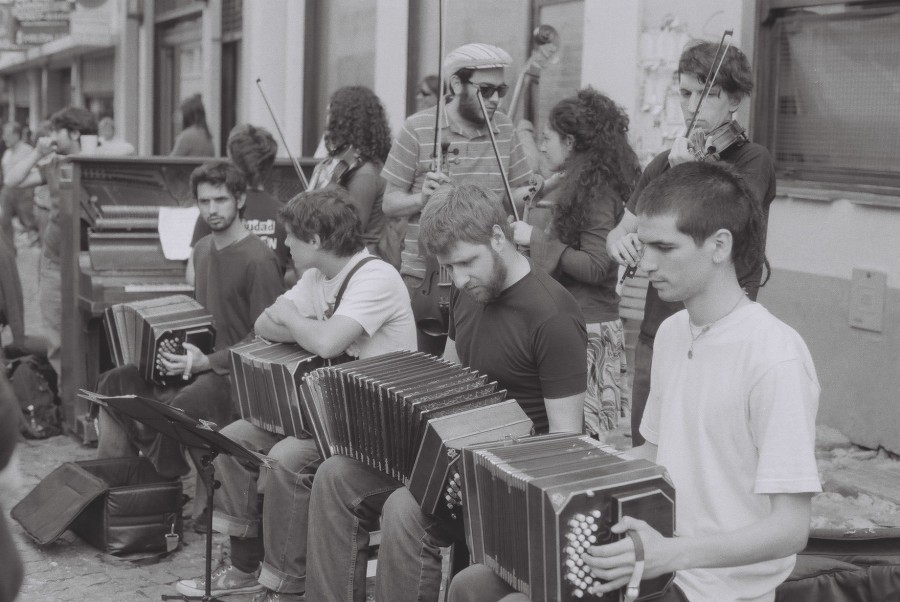
I returned to the Plaza Dorego in the Buenos Aires neighborhood of San Telmo to watch the people dance. Every Sunday Night, one side of the plaza is reserved for a milonga — the Argentine word for a place to tango. It’s a tradition for the class to go. Every Sunday.
To the right, a samba band started — loud drums, hooting, hollering.
“It is completely disrespectful. This is Argentine culture and they are ruining it,” my friend said.
I tried to hide my tapping toes.
Tango (much like mate and football and steak) is a part of Argentine pride (although some Uruguayans will claim the dance as their own. Who knows? Not I.) To put down tango would be like saying “hockey sucks” to a Canadian or “wine is better” to a German. Or would it be?
There can be a lot of negative aspects associated with globalization (marginalization, poverty, infringement of human rights, etc . . .), but the reality is, it is happening and there is some good stuff, too. I know of some amazing people who, when traveling, tried to help out where they could, volunteering, exchanging cultural ideas, bringing over wine for friends, essentially just being conscientious people. Most of us are. One couple I had the pleasure of traveling with even took in a dog off the streets one cold, Argentine-autumn night. I guess you do what you can when you can.
So it was when reading a recent article on tango in the New Zealand Herald, that I started thinking about fusion. What started this spark was when Geoff Cumming, the writer of the article, wrote that “Palermo is where you find your cutting-edge Latin beats.”
I wondered, why?
Perhaps because it’s newer.
As an observation, many of the younger generations are getting back into tango. Perhaps their grandparents or parents are encouraging them to upkeep tradition. What is really fascinating is that these kids nowadays are putting their own spin on it.
The other day when walking through the San Telmo Ferai, I saw a fusion-CD that read “The Beatles/Tango remix”.
Ok. So, The Beatles are not current and neither are CDs, but I thought the idea was incredible.
Back at tango class, they started putting on more “current” tango tunes — accordions mixed with electronica, or Portishead-like ambient music.
I wondered what a tango/samba remix would sound like?
Like all new things, it’s not something we can get used to right away. But, eventually we would and dance the waves.
By Brit Weaver

About the Author

Toronto born and based, Brit is an avid leisure cyclist, coffee drinker and under-a-tree park-ist. She often finds herself meandering foreign cities looking for street eats to nibble, trees to climb, a patch of grass to sit on, or a small bookstore to sift through. You can find her musing life on her personal blog, TheBubblesAreDead.wordpress.com.
The post Take Two And Tango In Buenos Aires appeared first on The Expeditioner Travel Site.
]]>The post Travel And Change (No Coin Necessary) appeared first on The Expeditioner Travel Site.
]]>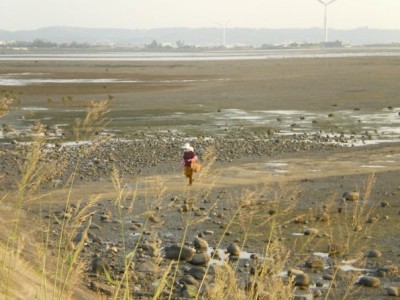
After six months of traveling, I remember one friend telling me, “never change.” I responded with, “change is necessary to grow.” I remember not knowing what that meant, but thinking that it had something to do with maturity and personality. Or something like that. So it was, for sometime during an extended-PTF that I had an existential-travel crisis: is it supposed to change you?
Just before re-arriving in Buenos Aires, I broke down a bit. Leaving Toronto (once again) with no plan. For most travelers, this would seem exciting and adventurous. Unfortunately, I seem to be more of a Paul Theroux traveler — one who romanticizes expeditions only to find them unbearable and exhausting. Each time I go back to my home city, my heart eases a little until the next place I wonder about. I wonder how many experience this kind of feeling.
So it was, when reading whether Modern Travelers Have Lost Their Way in the Wall Street Journal, I began to question whether we are supposed to experience existentialism on a journey or to be given “an opportunity of self-examination.”
I think that we learn to appreciate the difference between “want” & “needs,” and we also gain a better understanding of other cultures. Travel shows how most people in the world are actually good, not bad. It also shows that most places are actually quite peaceful, not violent. It opens one’s eyes to mainstream media’s propaganda of other places being “backwards.” But, instead of seeing this as a change of self, I think these experiences highlight aspects that were already present (quite possibly dormant).
Just like you get along with certain people for a certain reason — conversation flows easily over shared stories or thoughts — I think that certain places speak to different types of people. Some people have a curiosity of specific cultures. I remember traveling in Asia and the person I was traveling with preferred Taipei whereas I preferred Phnom Penh. Two different people with different tastes each taking the experience in those cities to re-discover their personal likes and dislikes.
It’s funny, though. Skype-ing with a friend the other day (I’m in Buenos Aires, she’s in Toronto), she told me how amazing it must be: writing in Buenos Aires! It seemed so romantic to her.
I couldn’t help but laugh. A lot of friends were concerned for my departure, dropping off copies of Eat, Pray, Love and giving advice on finding love. I didn’t really understand what was going on. I reassured my friend(s) that my stay here wasn’t exactly a movie moment — I had (have) apartment issues, the stress of finding a job, plans with friends I had made my first time here, etc . . . Essentially, I am doing the same thing that I would do anywhere, but just here. My self goes where I go. Growing up in a family of perpetual movers, I guess I learned to pack light and to bring my home in my heart.
Some people see this life and think it’s rosy. Perhaps it is, but I think everyone’s life is interesting. Perhaps travel allows us to, not change, but become more aware that self is not an extension of material “haves” but learning how to radiate “gives” (of time and advice) and “takes” (of time and advice). After so much moving around, whether to a new city or short jaunts of travel, always sharing time with family and friends, the only thing that has changed about me is learning this process called “flow.” But, that could just be a part of growing up.
By Brit Weaver

About the Author

Toronto born and based, Brit is an avid leisure cyclist, coffee drinker and under-a-tree park-ist. She often finds herself meandering foreign cities looking for street eats to nibble, trees to climb, a patch of grass to sit on, or a small bookstore to sift through. You can find her musing life on her personal blog, TheBubblesAreDead.wordpress.com.
The post Travel And Change (No Coin Necessary) appeared first on The Expeditioner Travel Site.
]]>The post A Walk To Ponder – Taxila, Pakistan appeared first on The Expeditioner Travel Site.
]]>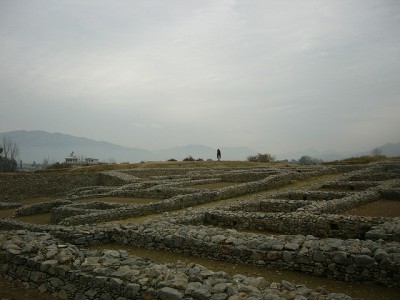
“Where is it? Why don’t you have it framed?”
“I don’t know. It’s rolled up here somewhere.”
I often wonder about life in a classroom and the difference between education inside and out in the streets. Over many years of personal anthropological studies (people watching from cafe windows or park benches), I have observed with complete fascination the human being’s ability to learn: People using branches to lift kites from tree-tops, younger people using lighters as beer-bottle openers, people reading beneath trees soaking up words to ponder over, etc . . . People are very cool.
Sometimes, I found some people within the classroom very theoretical and highly cerebral. In a tutorial setting, they would throw around big theories and bigger names. But, five minutes before the end of the session, some would gather their things because, really, they just wanted to get out of the fluorescent-lit box, to get outside and, well, live.
I think that traveling, whether to foreign countries or within one’s country, gives an opportunity to learn “out there.” Through a series of inter-exchanges (or mis-exchanges), we learn about other ways of doing things as well as a little more about who or why we are. We also get to learn a little history, which gives us some insight.
When looking through the pictures of two people’s walk through Taxila, I was happy to see sub-titled descriptions of each image or idol — something that the photographer learned about. Taxila: a place where people congregated to study. I tried to imagine what discourses would look like. And then, I noticed a comment:
I can’t believe how ingrained are the biases in the institutions like Smithsonian. Taxhashila was an Bharatiya Institution, that had predominantly builders and teachers from Hindu and Buddhist background. And yet the mention of Persia and Greek is expressed dominantly over here and Hindu is not even mentioned. That Greek has to be present every where, since European Euro centrism thinks world world would be a dark place without the light of the Greeks. Clearly the subjects taught in this institutions were also those developed within Indian domains. A predominantly Hindu Nation (including Buddha himself). But that won’t do. I am highly disappointed with Smithsonian. Whose subscription I stopped because of this reason some time ago. Ravindra
. . . and I thought this was exciting. An online debate! But there was no forum, no table to discuss the authors’/photographers’ perspective and why they chose those shots, or how they learned the information they put forth, etc . . .
I guess that is part of the world wide web-room of knowledge. We only see glimpses into a much richer experience of getting to know a place. Instead, we acquaint ourselves with mini-online-chapters of life’s forever-changing-textbook. Still, I guess we can’t know everything but we learn a few things along the way. And there is no paper for that.
By Brit Weaver

About the Author

Toronto born and based, Brit is an avid leisure cyclist, coffee drinker and under-a-tree park-ist. She often finds herself meandering foreign cities looking for street eats to nibble, trees to climb, a patch of grass to sit on, or a small bookstore to sift through. You can find her musing life on her personal blog, TheBubblesAreDead.wordpress.com.
The post A Walk To Ponder – Taxila, Pakistan appeared first on The Expeditioner Travel Site.
]]>